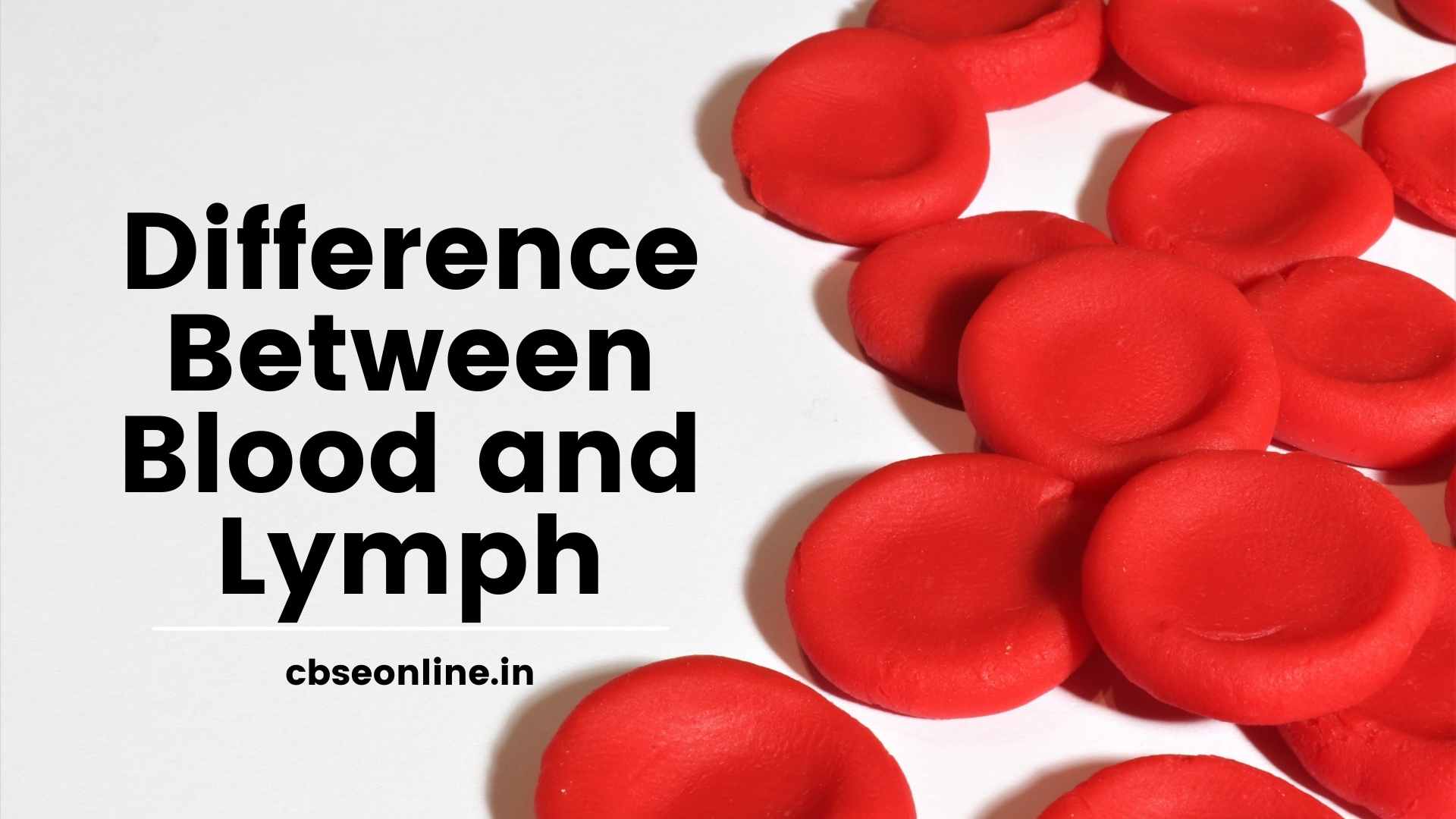In this article, we going to discuss the difference between Blood and Lymph of class 10 science with full definition and the pointwise difference between blood and lymph.
Difference Between Blood and Lymph
Blood: It is a mobile fluid connective tissue of reddish colour that circulates in the human body, supplying nutrients and oxygen to all the living cells and taking away waste products as well as carbon dioxide from them. The blood carrying oxygen attached to the haemoglobin(as oxyhaemoglobin) is called oxygenated blood. The blood carrying carbon dioxide and little oxygen is called deoxygenated blood. An adult human has a total of 5-6 litres of blood. Blood is made up of two components, plasma and blood corpuscles.
Lymph: It is a light yellow viscous fluid that is formed from tissue fluid and collected by special lymph capillaries for the passage into venous blood. Tissue fluid itself is blood plasma filtered out of the blood capillaries. Lymph does not contain RBCs and Blood platelets. Leucocyte nodes. Lymph is specialised to collect tissue secretion which cannot pass directly into the blood.
| Blood | Lymph | |
|---|---|---|
| 1 | Colour: Blood is reddish in colour | Lymph is pale yellow in colour |
| 2 | Opacity: Blood is opaque | Lymph is semitransparent |
| 3 | Viscosity: It is quite viscous or thick | Viscosity is low |
| 4 | RBCs: It contains RBCs | RBCs are absent |
| 5 | Blood Platelets: They are present | Blood Platelets are absent |
| 6 | Leucocytes: Leucocyte count is 5000-8000 per ml | Leucocytes count is low, 500per ml, mostly due to lymphocytes |
| 7 | Flow: Blood flows rapidly | Flow of lymph is slow |
| 8 | Direction: Blood flow is bidirectional, from heart to organs and organs to heart | Lymph flow is unidirectional, from tissues to the subclavian veins |
| 9 | Transport: It is main transport medium of the different materials in the body | Its functions as a middleman between blood and tissues |

